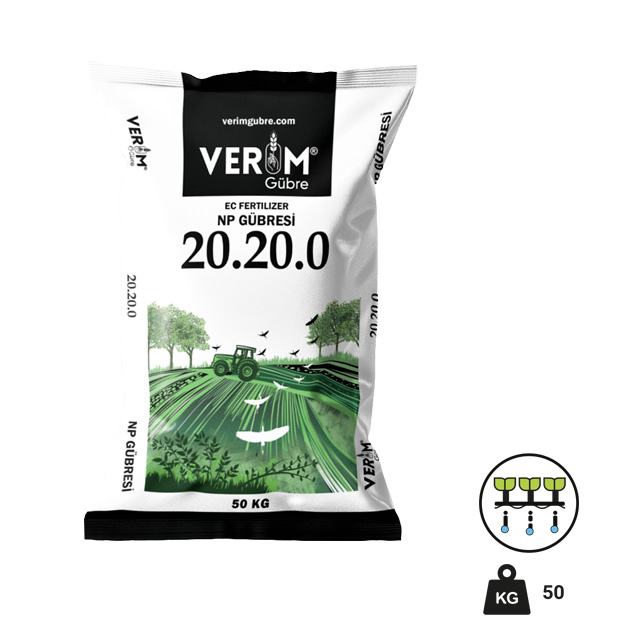
20.20.0
Plants
It is used as a bottom fertilizer during the plantation in all plants, particularly cereals, cotton, sunflower, and corn. 20.20.0 fertilizer can be used easily in all kinds of soils that are rich in potassium but poor in phosphorus and nitrogen
Featured of Product
It is the most commonly used bottom fertilizer in our country. It equally contains nitrogen and phosphorus. It has impact on the root and stem formation of plants. It must not be left on the surface of the soil. It must be administered by burying to the plant root depth or seed depth. In this way, the plant can benefit from phospho- rus throughout its development period. The best way to use it is to apply it to the tape 5 to 8 cm below the seed during seeding
BENEFITS
Since the contained nitrogen dissolves completely and phosphorus dissolves near to whole in water, it is easily taken by the plants. Since the contained nitrogen.
| Guaranteed Content(%W/W) | (%W/W) |
| Total Nitrogen (N) | 20 |
| Ammonium Nitrogen (N) | 16,5 |
| Urea Nitrogen (N) | 3,5 |
| Neutral Ammonium Citrate and Water Soluble Phosphorus Pentaoxide (P2O5) | 20 |
| Water Soluble Phosphorus Pentaoxide (P2O5) | 17 |
| Uses and Dosage | Method of Application: From the soil |
| Peanut | 30 – 40 kg/da |
| Corn, Cotton | 40 – 50 kg/da |
| Sugar Beet, Onion | 40 – 50 kg/da |
| Watermelon, Melon, Carrot, Radish, Strawberry | 40 – 50 kg/da |
| Potato, Wheat, Barley, Sunflower, Paddy | 60 – 70 kg/da |
| In Open Field Vegetables | 40 – 50 kg/da |
| In greenhouses | 50 – 60 kg/da |
| Hard and Soft Pome Fruit Trees (According to Age) | 1 – 4 kg/tree |
| Citrus (By age) | 1 – 4 kg/tree |
| Olives (by age) | 1 – 4 kg/tree |
| Apple (By age) | 1 – 4 kg/tree |
| Grapes (Vineyard) | 30 – 40 kg/da |
| Ice | 60 – 70 kg/da |
| Tobacco | 10 – 20 kg/da |
Click on the Image for the Catalog



